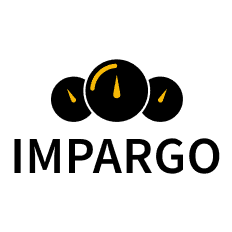How to Reduce Transport Costs
For fleet operators, dispatch teams, and logistics managers, transport costs come down to five levers: fuller trucks, cheaper kilometres, fewer manual steps, accurate pricing, and stronger carrier choices. Use the steps below to act this week—and measure results next week. Powered by IMPARGO TMS.
On this page
- Plan fuller tours (multi-order HGV tours, fewer empty km)
- Choose cheaper kilometres (routing, tolls, compliance, dynamic rerouting)
- Automate dispatch & visibility (dispatch plan, alerts, DriverApp)
- Price by cost per km (calculator, cost profiles, offer PDFs)
- Optimise carrier strategy (spot procurement, market rates, partner mgmt)
1) Plan fuller tours
The fastest way to reduce transport costs is to raise vehicle utilisation. Combine compatible part loads into one multi-order HGV tour, cut empty runs, and reduce toll exposure (incl. CO₂ components).
- Do now: Bundle orders on the same corridor/day; align by time windows and loading constraints.
- Goal: +10–15% average fill; empty km < 12% on core lanes.
Dispatchers can combine orders into one HGV tour, auto-optimise stop sequences, and adjust tours on the fly with IMPARGO TMS.
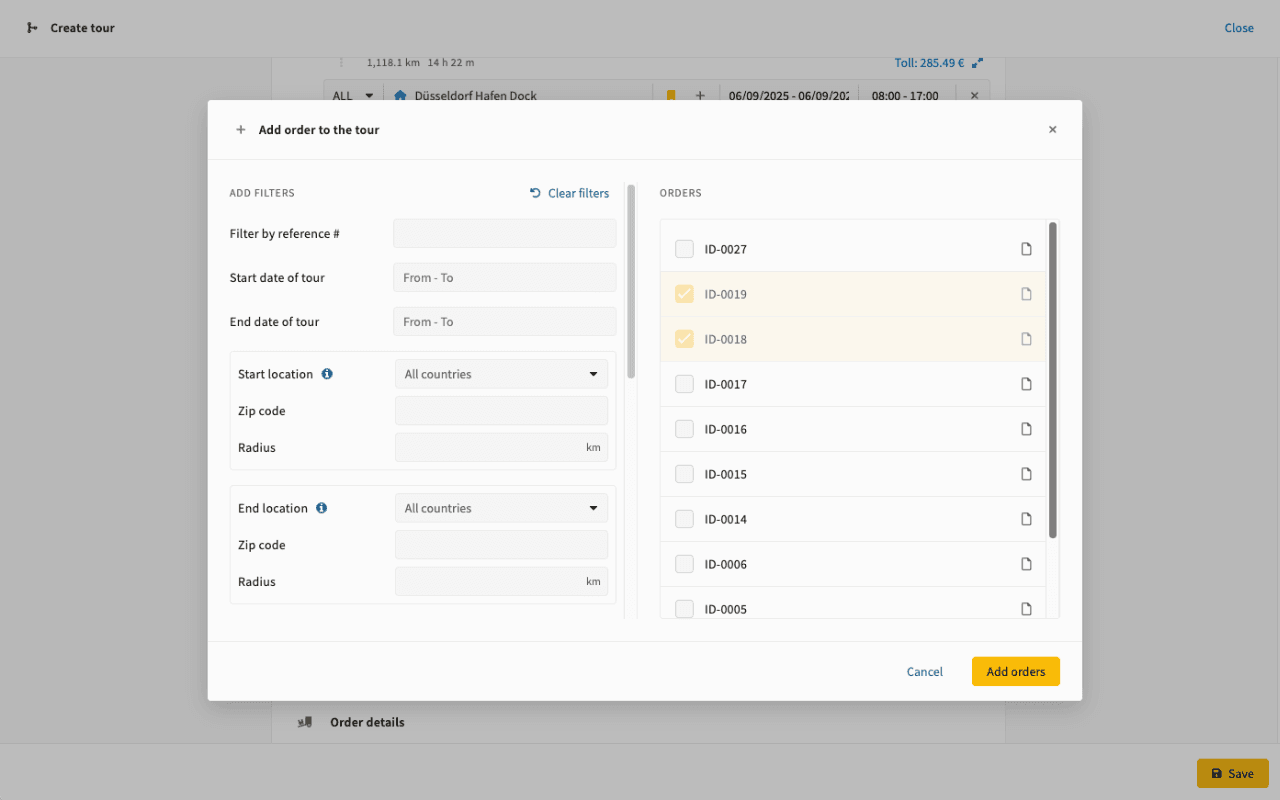
2) Choose cheaper kilometres
Not every “fastest” route is the cheapest. Use truck-aware routing to balance fuel burn, tolls, and SLAs—then keep adapting in real time.
- Do now: On non-urgent loads, pick “lowest cost” routing over “fastest”.
- Add: Dynamic rerouting for traffic/incidents; EU driving & rest time compliance checks.
- Goal: −3–5% trip cost; on-time delivery ≥ 97%.
Start with the truck route planner and HGV-specific guidance in the truck navigation app for dynamic rerouting, precise ETAs, and conflict alerts.
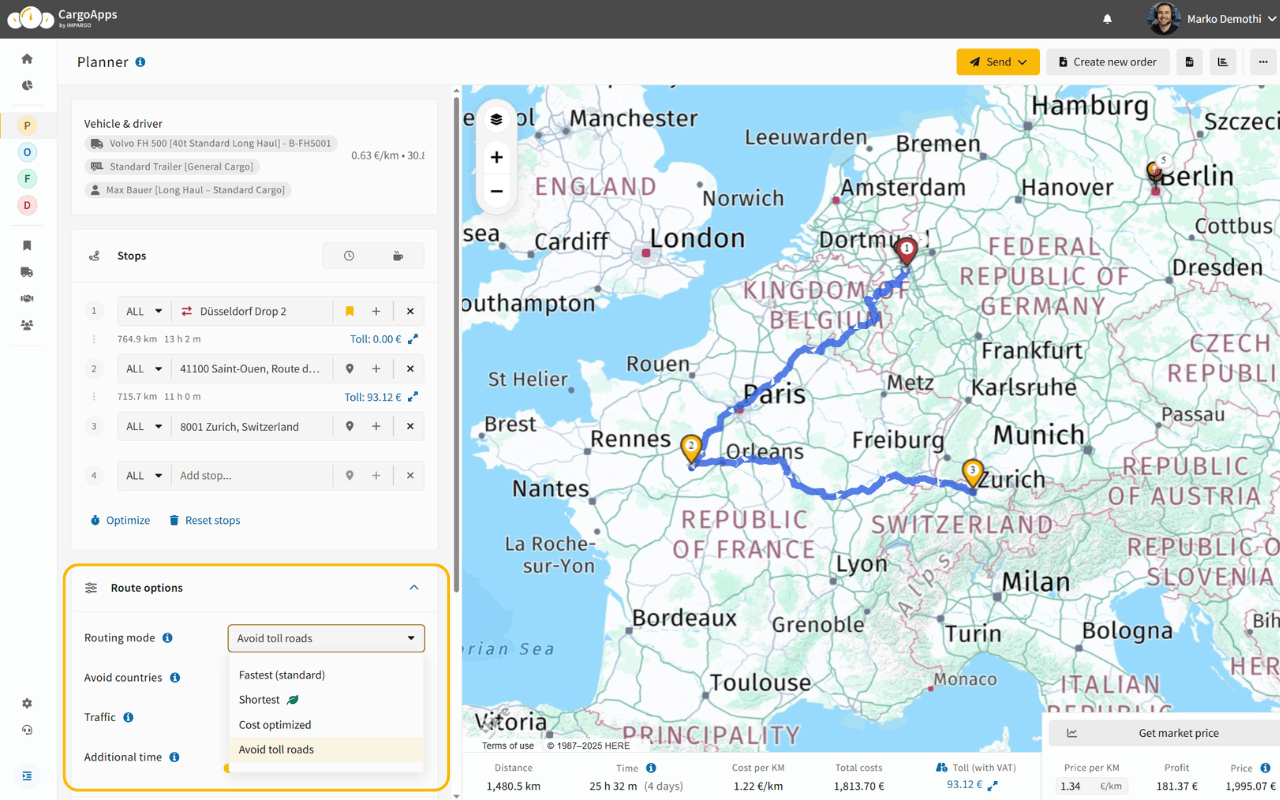
3) Automate dispatch & visibility
Manual coordination is expensive. A live dispatch board plus automatic notifications reduces waiting time, missed slots, and rework.
- Do now: Visualise jobs, drivers, and vehicles; drag-and-drop to fix conflicts.
- Add: Automated arrival notices (e.g., 1 hour before) so customers are ready to load/unload.
- Goal: Admin < 5 min per order; failed delivery < 1%.
Use IMPARGO TMS to run a dispatch plan (live map, timeline views, smart filters), share tour PDFs to the DriverApp, and send status updates automatically.
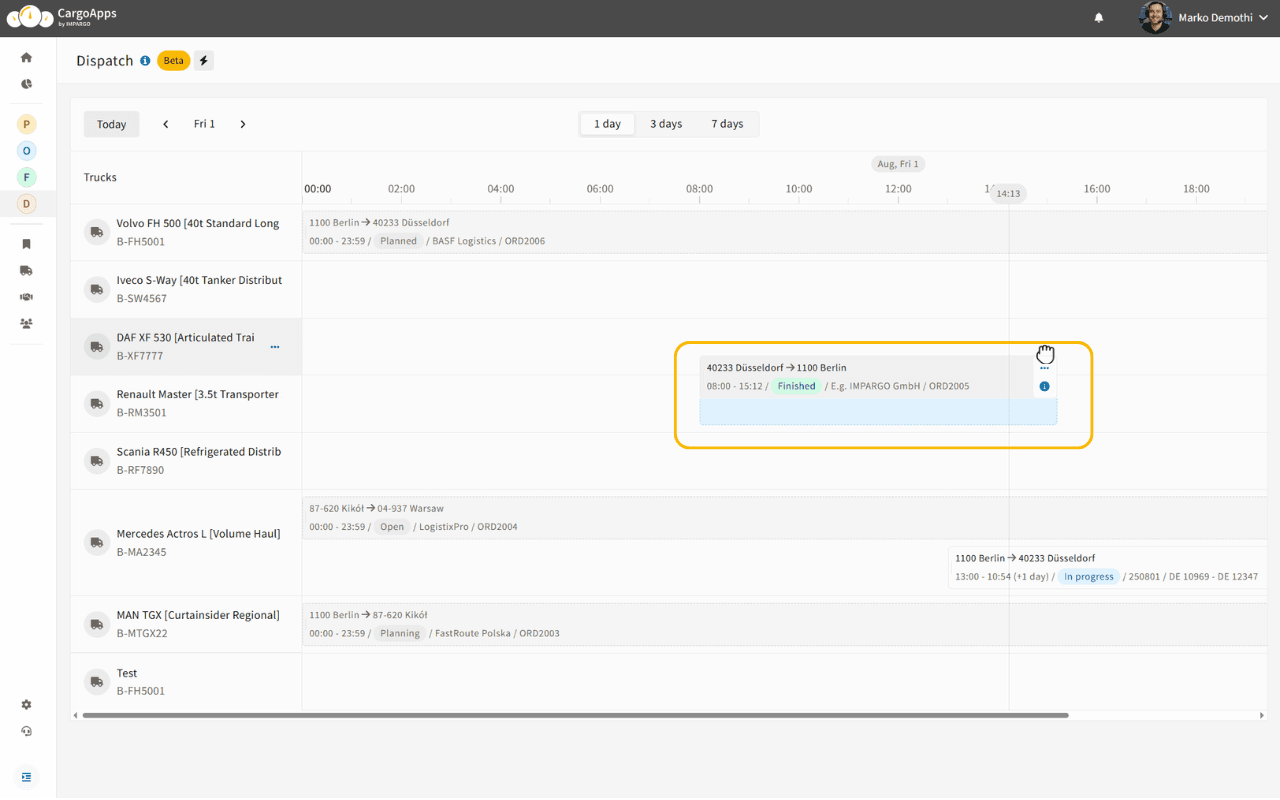
4) Price by cost per km
Quote with confidence by modelling your true per-km cost. Reject unprofitable loads; set margins by lane/vehicle.
Formula
Cost per km = (Fuel + Tolls + Wages + Maintenance) ÷ Total km
Example
For 1,000 km: Fuel €300 + Tolls €50 + Wages €200 + Maintenance €50 → €0.60/km.
- Do now: Use cost profiles for vehicle, driver, trailer; include empty vs. loaded legs.
- Add: Auto-generated offer PDFs with route-specific pricing.
The truck cost calculator shows distances, tolls, and times in real time; it allocates tour price per order/customer and supports subcontractor comparisons.
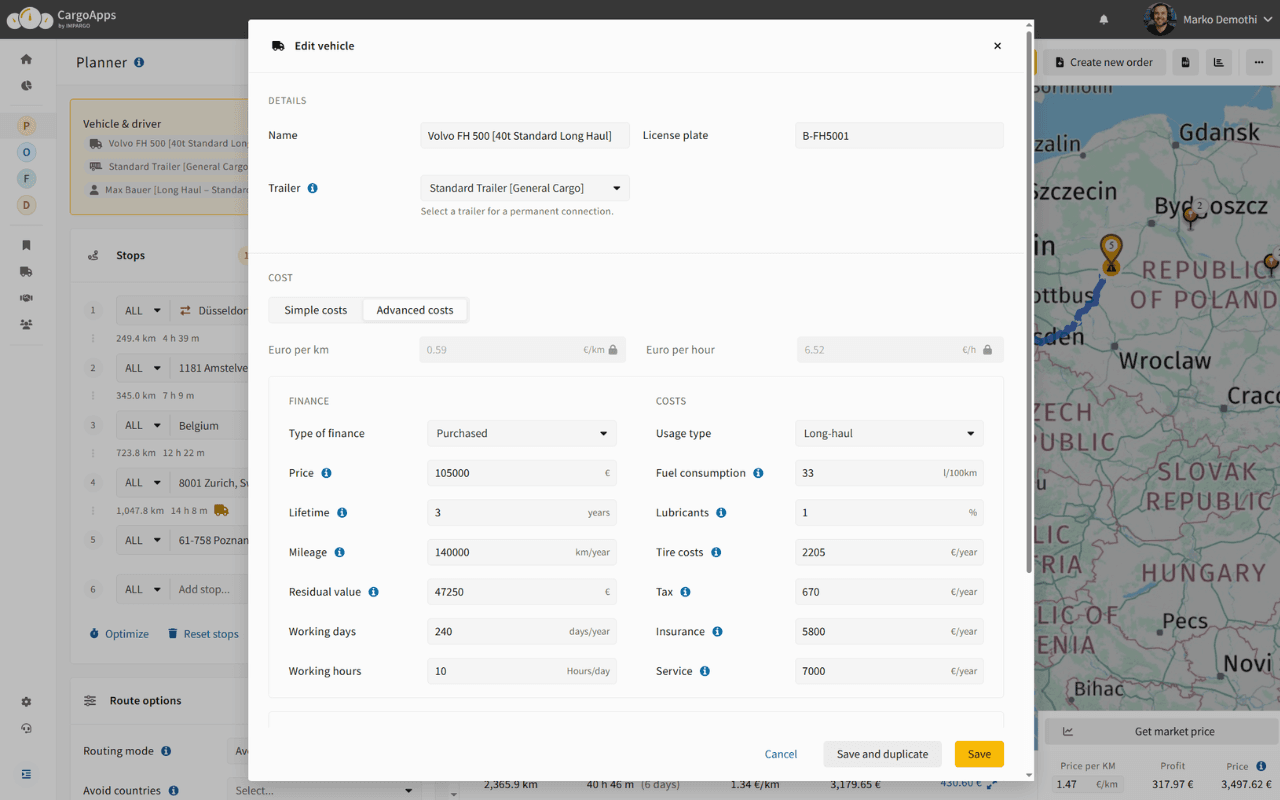
5) Optimise carrier strategy
Costs drop when you award to the right partners at the right price. Standardise onboarding, compare spot offers quickly, and benchmark with market data.
- Do now: A/B/C carrier tiers by lane; award “first look” to A-tier.
- Add: Real-time spot offer comparison + built-in cost calculator; market benchmarks for price checks.
- Goal: −4–7% per-lane cost after re-allocation; tender acceptance ≥ 95%.
Build stronger networks with logistics partner management and make smarter awards using the freight analytics dashboards.
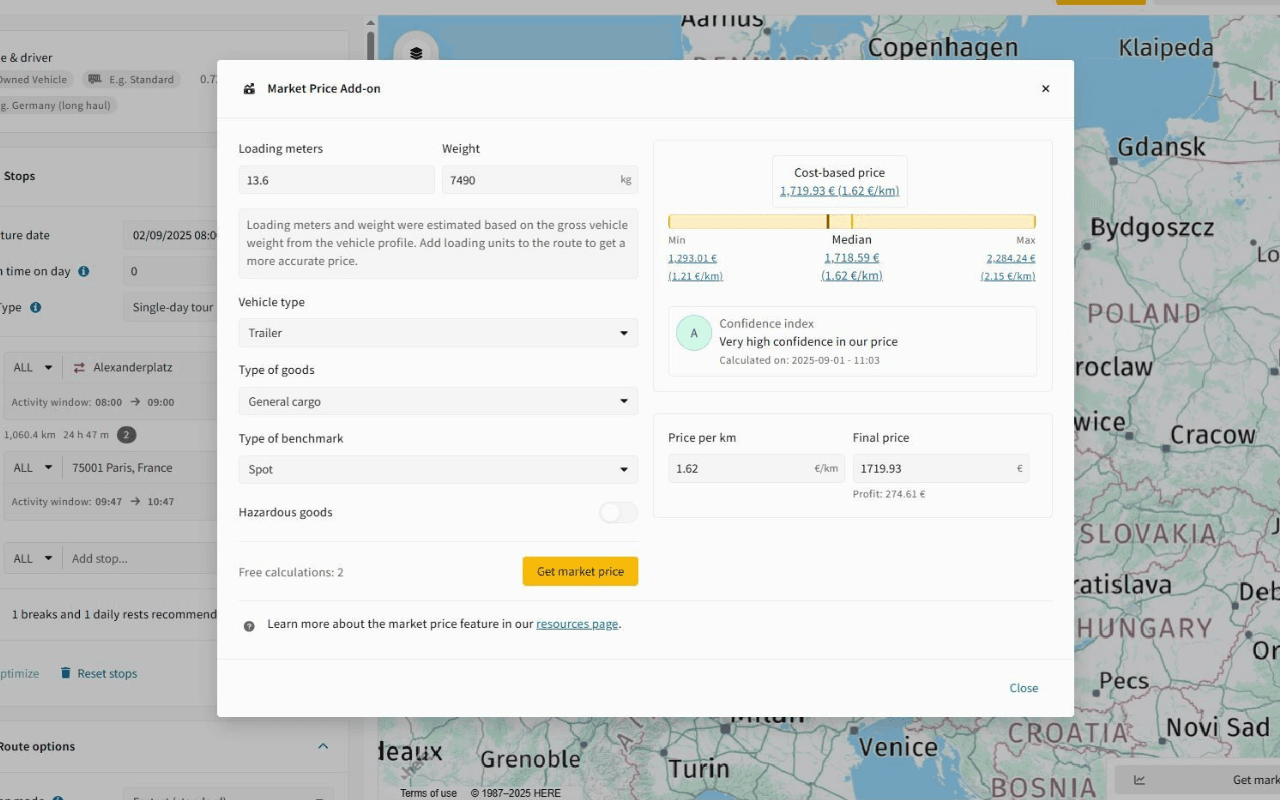
Start this week
- Mon–Tue: Turn 3 recurring partial loads into one multi-order tour.
- Wed: Switch two non-urgent lanes to “lowest cost” routing; enable ETA alerts.
- Thu: Build vehicle/driver/trailer cost profiles; generate offer PDF templates.
- Fri: Tier carriers by lane; pilot spot-offer comparison on one corridor.
Ready to tailor this to your network and lanes? Contact our sales team.
